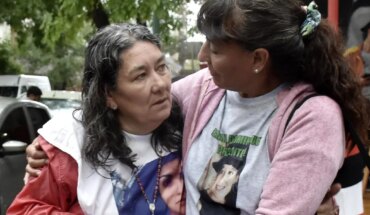The number concerns the specialists of the Mundo Marino Foundation who participate in an international network for the conservation of the Franciscan dolphin. So far this year a total of 35 species of this type were found stranded on Bonaerenses beaches. Three of them were found alive but only one is still in rehab and with a highly critical prognosis. Only during the last month and a half were three live cubs of Franciscan Dolphin (Pontoporia blainvillei) or Del Plata Dolphin rescued in the seaside towns of Nueva Atlantis, Las Toninas and Cariló.In the first two cases, which occurred during the month of November, the Mundo Marino Foundation attended after the call of neighbors who met the stranded animal on the beach , while in the case of Cariló, which occurred earlier this week, the Pinamar Ecological Foundation provided him with first aid until the Mundo Marino Foundation arrived and moved the dolphin to its rehabilitation center. Only in the latter case does the dolphin remain alive, although from previous experiences, its chance of survival is extremely low. According to specialists, the fact that most animals found stranded alive are newborn puppies makes their survival rate very low. In fact, no rescue center in the region has been able to keep a newborn of the species alive for more than a couple of weeks.” The most accepted hypothesis as to why stranded puppy animals appear has to do with the possibility that the mothers of these lactating cetaceans will die engarmed in fishing nets, forcing the physical separation of both. The puppy begins with an erratic displacement and ends up stranded on the beach. In fact, the discovery of dead adult females in fishing nets with lactating capacity and widened uterus reinforces this hypothesis,” explains Pablo Denuncio, phD in life sciences and researcher at the National University of Mar del Plata and CONICET.
On the other hand, Denuncio adds: “In most cases they are very small animals and do not exceed 10 days of life and these puppies need to be 7 to 9 months nursing. Although the appearance of these puppies indicates that the species is breeding, especially in the Cape San Antonio area, the circumstance in which they appear is not encouraging.” That’s why from the foundation they created a series of guidelines for tourists to know what to do and fundamentally what not to do in the face of the finding. 1- In this situation: communicate urgently with suitable personnel. The telephone number of the Rescue Center of the Mundo Marino Foundation for emergencies is (02252) 43-0300 or the Argentine Naval Prefecture can be contacted at 106.
2- Always try to keep the animal in little water, with its spirácle (hole through which they breathe located in its head) out of the water.
You should not try to reintroduce it to the sea because the animal that is stranded is weak and for that reason can enter water in its lungs further aggravating its situation.
3- Whenever the animal is alive it is necessary to keep people away from stressing, and with the assistance of 1 or 2 people it must keep it moist.. To discern if the animal is alive it is necessary to observe that the spirácle does not remain closed, since it is through that hole that it performs the exchange of gases with the lungs.
4- If you are dead, do not approach by the health risk you may entail. For more information visit the Sea World page by clicking here.





